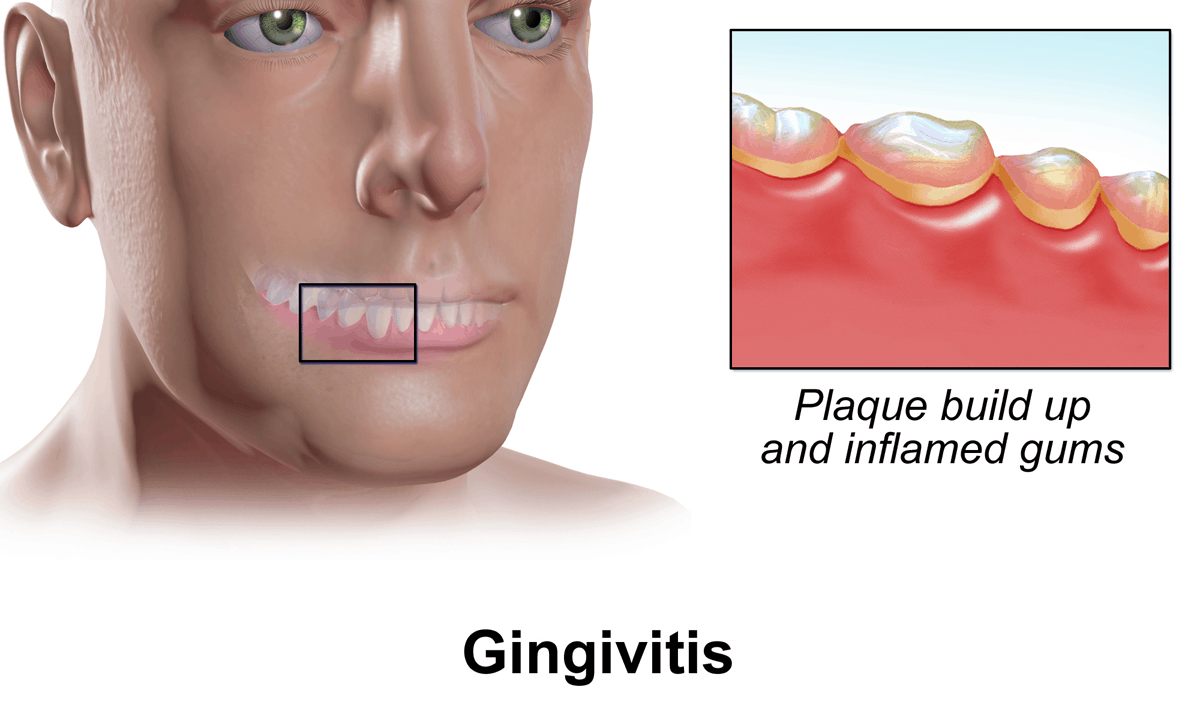Ask yourself, do your gums sometimes become sensitive, swell or even bleed when you brush and floss? Well then it’s a possibility that you have gingivitis, and you’re not alone. According to the Canadian Dental Hygienist Association, around 50% of Canadians have gingivitis, and many of them don’t even realize it.
What Is Gingivitis?
Healthy gums are firm, pale pink, and fit tightly around your teeth. If you have gingivitis, your gums become red and puffy. They might easily bleed when you’re brushing and flossing, and you may suffer from bad breath and receding gums. This is all caused by the buildup of plaque–– a naturally-occurring sticky film containing bacteria – on the teeth and gums.
Though common, gingivitis needs to be taken seriously. If left untreated, gingivitis can lead to a gum disease called periodontitis. Periodontitis spreads to the tissue and bone under your gums and can lead to tooth loss.

Risks of Developing Gingivitis
Anybody can develop gingivitis, but the following factors may increase your risk:
- Old age
- Smoking or using chewing tobacco
- Poor oral hygiene habits
- Dry mouth
- Poor nutrition, including a deficiency in vitamin C
- Hormonal changes, such as those related to menstrual cycles and pregnancy
- Genetics
- Crooked teeth that are difficult to clean
And many more!
How to Prevent Gingivitis
Now that you understand more about gingivitis, you’re probably wondering how you can prevent it if you don’t already have it. The good news is that it’s not hard to prevent and even easier using these tips:
- Use good oral hygiene. This is the bare minimum when it comes to preventing gingivitis. Make sure you’re brushing your teeth at least twice a day for two minutes and if you can, consider brushing after every meal or snack. You also want to make sure you’re flossing at least once a day to help clean away any food particles and bacteria that brushing leaves behind
- Keep up with regular dentist visits. See your dentist for regular cleanings. If you have some of the risk factors associated with developing gingivitis, you might need to visit your dentist more often
- Follow proper health habits. One final way you can help prevent gingivitis is by following proper health habits. This includes limiting your sugar intake and making healthy eating choices
How to Treat Gingivitis
If you do develop gingivitis, there are a couple of different measures you can take to ensure the infection is treated. Your dentist might recommend some at-home treatment options include the following:
- Antibacterial toothpaste. Antibacterial toothpaste continues to fight plaque even after you’re done brushing
- Antibacterial mouthwash. Your dentist may recommend you use an antibacterial mouthwash. It clears away plaque bacteria in places that are hard to reach
- Brushing your teeth more effectively, including switching to an electric toothbrush and paying attention to the gum line when you’re brushing, since this is where plaque bacteria build-up often occurs
If you still aren’t sure about exactly how to beat Gingivitis, you can always ask Dr. Vlahos in St. Catharines about deep cleaning treatments offered at their office!
Gingivitis doesn’t have to cause you health problems. Now that you know more about gingivitis, you can do a better job of avoiding it and treating it.